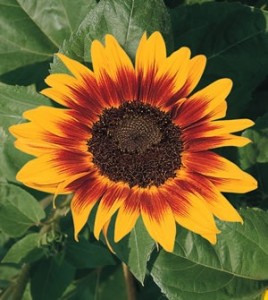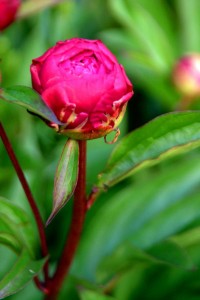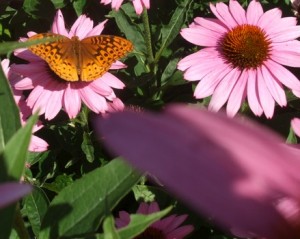First the national:

Rose. FreeFoto.com
George Ball, whose companies include Burpee, Heronswood, Ball Horticulture and other garden-related operations, blogged a few weeks ago about changing the national flower from the rose to the sunflower.
President Ronald Reagan signed a proclamation making the rose our national flower in 1986.
“As a proclamation, the measure does not have the power of law. Law or no, it’s time we chose a more suitable flower to symbolize this land of ours.
“If the genteel rose is to serve as our National Flower, we might as well name the hummingbird our National Bird.
“The domesticated rose, first of all, is not a native plant, but originates in Asia. Roses didn’t really come on the scene here until the 1700s. The cultivated roses arranged and sold by stateside florists today are nearly all foreign born and bred, their stems and petals never touching American soil before taking refuge in the cool confines of florists’ refrigerators. The profits from cut roses go abroad, which ill becomes the nation’s flower of choice,” Ball blogged, waxing poetic about our national symbols and the Fourth of July.

'Ring of Flower' sunflower.
“I hereby nominate the Sunflower as our new National Flower. It is time for the Sunflower to step up and kick some serious rose butt. The sunflower is native to America, and was cultivated both by native Americans and Aztecs in pre-Columbian Mexico. The sunflower reflects American pragmatism, lending itself to multiple uses. Sunflowers are a native economic powerhouse. The sunflower (Helianthus annuus) is one of the four major native crops that have global significance, along with the blueberry, pecan and cranberry. Millions of acres are devoted to sunflower oilseed production. Sunflowers are an enormous blessing to the world economy, rivaling the rose in importance abroad, and blowing its petals off here in the States,” he continued.
Now for the state:

Peony bud. FreeFoto.com
Why, oh, why does Indiana have the peony as our state flower? I like peonies, especially their fragrance, and have several in my garden. But the peony (Paeonia) is from Asia. The peony has been the state flower since the 1950s. Prior to that, it was the zinnia, which at least is a native plant in North America. Before the zinnia (Zinnia), it was the flower of the tulip tree, Indiana’s state tree (Liriodendron tulipifera).
A few years back, several organizations attempted to get a bill before the Indiana General Assembly to change the state flower from peony to firepink (Silene virginica), a lovely native plant that is unfamiliar to most of the general public. A couple of years later, another attempt was made, this time to change the state flower to purple coneflower (Echinacea purpurea), another native that many people are familiar with. Yet, with all of the popularity of the purple coneflower, no state has claimed it as a state flower, so this was Indiana’s chance.

Coneflower and fritillary. (C) Jo Ellen Meyers Sharp
The group conducted surveys and educated the public, Master Gardeners throughout Indiana, plant-related groups, naturalists, gardeners, garden club members and many others.
Two brave legislators, a Republican and a Democrat, offered a bill each time, but it never had a hearing. The local media, of course, ridiculed the measure, saying it was a waste of legislators’ time. However, the Indiana General Assembly is the only body that can make this kind of change. Honestly, it was a disheartening experience.
Please feel free to express your opinion.